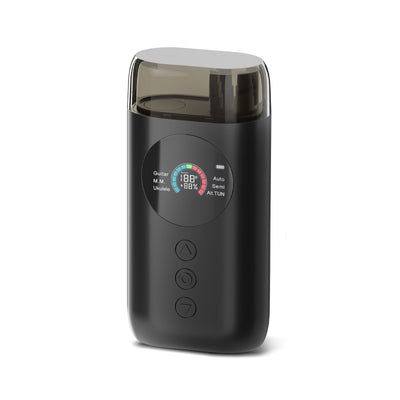Arranging Songs for the Ukulele melody

Welcome back! In part one, we covered several different techniques for learning a song’s chords and arranging them on the ukulele. Now we’re going to take your arrangement to the next level by adding the melody. Let’s jump right into it.
LEARNING THE MELODY
Just like with the process of learning the chords, there are a couple different ways to go about figuring out and arranging a song’s melody for the ukulele. The first option is to look online and see if you can find the melody written out somewhere. Unfortunately, unlike with chords, your selection is going to be pretty limited, and you’ll have to do a bit of digging. I’d start by looking for sheet music for the song. Do a Google search for “[song title] by [artist] sheet music” and see if anything comes up (you’ll generally only find anything if it’s a well known song). Some sheet music will be free and some will cost a little bit of money to access, so you’ll have to decide what your priorities are. If it costs money, you can be pretty certain that you’re getting an accurate transcription of the song, which is a major plus. If you don’t know how to read sheet music yet, this is a good opportunity to start learning, as you can slowly go through note by note, determine what each note is, and then figure out where that note is on the ukulele fretboard — just like the process of translating a guitar tab that we went over earlier. However, between the cost and limited selection of available sheet music, there’s a good chance you’ll be looking elsewhere. Another option is to look around and see if anyone has already done an instrumental arrangement of the song and posted tabs or sheet music for it, either on the ukulele or another instrument that you can then translate onto the uke. Start by going to YouTube and searching for “[artist] [song title] instrumental cover” and seeing what you can find. You may not be able to find anything at all online in terms of melody transcriptions for the song, in which case you’ll need to move on to a different method.

Another way to approach figuring out a song’s melody is to learn it by ear. This means listening to the song, determining what the notes are, and then arranging those notes onto the ukulele. It can seem pretty daunting at first, but with a little bit of practice and patience, you’ll find that it’s not quite as hard as it seems. A good starting place is to determine what the first note in the melody is. Listen to the melody and sing the first note out loud. Try not to use the word being sung and instead use a soft syllable, such as “ah” or “la”. This will help you focus solely on the pitch of the note. Then, while singing the note, pluck around on your ukulele until you find it. The singing is meant to isolate the note and help you locate it on the ukulele, but if you find it to be more distracting than helpful, go ahead and skip straight to plucking around on the uke until you find the note (you’ll likely need to repeat that part in the song a few times before you get it). This process will become much easier the more you do it. Once you’ve identified the first note, move on to the next. You can go through note by note and use the same process as you did with the first note, but here are a few helpful tips that will make the process easier:
1. Use a tuner to help you figure out notes. There are plenty of free tuning apps and online tuners out there, so you shouldn’t have a problem accessing one.If you get stuck on a certain part of the melody, turn on your tuner and sing that phrase slowly, one note at a time. The tuner will identify each note that you sing, and then you can play them on your ukulele to see if it sounds right.
2. Slowing the song down makes it a lot easier to follow the notes when you are figuring out the melody. There are a couple different ways to this, the simplest being to find the song on YouTube and then click the “settings” icon in the bottom right of the video to adjust the playback speed. If you use a DAW (digital audio workstation) for recording music, you can use that to slow down song files as well. This is my preferred method as it allows you to loop sections and move around to different parts in a song much easier than with a YouTube video.
3. Having a basic understanding of musical scales is enormously helpful when figuring out melodies.The majority of songs you arrange will either be in a major or minor key, so if you learn the major and minor scales on the ukulele, you’ll be able to take a lot of the guesswork out of the melody arranging process. Each scale only has seven different notes in it, which means that if you can identify what key the song is in, you’ll only have to pick from those seven notes when figuring out the melody. The formula for determining a major or minor scale in any key is written out below. Identifying a song’s key by ear takes some practice and knowledge of music theory, but there’s a helpful website called tunebat.com on which you can search for any song and it will tell you what key it’s in.
To figure out a major scale, start with the root note and use this pattern of half steps and whole steps to figure out the remaining notes. As we covered earlier, a half step is when you move one musical pitch away from a note (e.g., F to F#), and a whole step is two musical pitches (e.g., F to G). “H” represents a half step and “W” represents a whole step.
W W H W W W H

So, in the key of F major, the scale starts on F, and then goes G, A, Bb, C, D, E, and then back to F. A whole step up from F is G, a whole step up from G is A, a half step up from A is Bb, and so on.
For a minor scale, the pattern is W H W W H W W. So in the key of F minor, the scale starts on F, and then goes G, Ab, Bb, C, Db, Eb, F. Remember that on a ukulele, a half step is equivalent to moving one fret away, and a whole step is two frets away. So, to practice the F minor scale, start on the note F (C string, 5th fret), and then follow the above pattern of half steps and whole steps, moving up one fret for each “H” and two frets for each “W”.
Once you’ve finished arranging the melody, what you do next is up to you. You could make a multi-layered recording to hear how the chords and melody sound together on the ukulele, or find a buddy to play one part while you play the other. Maybe you even want to try to combine the chords and melody into a solo fingerstyle arrangement.
Remember, like I mentioned at the beginning, there isn’t one “correct” way to go about arranging a song — in fact, as you can tell from the assortment of methods and techniques throughout this article, there are many different approaches you can take. Over time, you’ll figure out what strategies work best for you. My biggest piece of advice when you’re getting started is to pick a simple song to arrange first so that you can get the hang of the arrangement process. Pick something with a basic song structure, a simple chord progression, a repetitive melody, etc. Arranging and then playing or recording a cover of a song that you really like is a wonderfully rewarding feeling. Good luck, and have fun!









